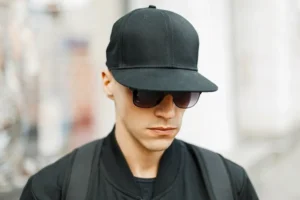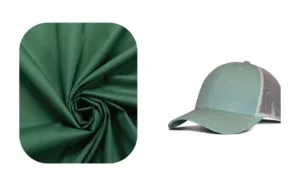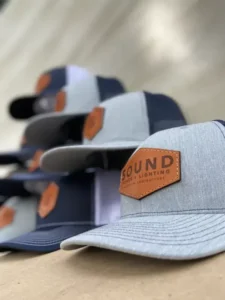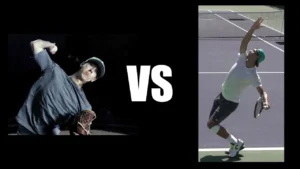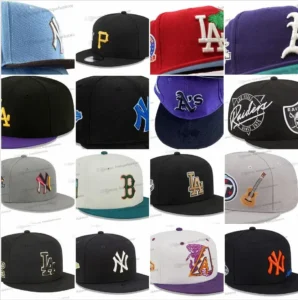Caps are more than sportswear. They protect players, influence performance, and represent personal style. Baseball and tennis caps may look similar, but their design and function differ in important ways.
The main difference between baseball caps and tennis caps is their purpose. Baseball caps are structured, with curved brims and reinforced panels, built for team identity and outdoor play. Tennis caps are lighter, less structured, often with breathable fabrics and low-profile designs, made for fast movement and comfort in high heat.
Transition: Let’s explore the detailed differences step by step.
1. What Are the Structural Design Differences Between Baseball Caps and Tennis Caps?

Baseball and tennis caps share the idea of sun protection but use very different design structures.
A baseball cap has a structured crown, reinforced panels, and a curved brim. A tennis cap has a softer crown, lightweight materials, and sometimes a shorter or thinner brim to reduce distraction during fast play.
Baseball caps are designed to hold logos and maintain shape for long periods. Tennis caps focus on movement, sweat absorption, and comfort during quick rallies.
| Feature | Baseball Cap | Tennis Cap |
|---|---|---|
| Crown | Structured, reinforced with stiffener | Soft, unstructured for light weight |
| Brim/Visor | Curved, medium length | Often thinner, sometimes shorter |
| Fit | Adjustable strap, sometimes fitted | Adjustable strap with focus on comfort |
| Purpose | Team identity, sun protection | Cooling, performance in hot matches |
Baseball caps feel firmer and last longer in shape. Tennis caps are flexible, reducing pressure and weight, helping players stay focused on fast movement.
2. How Do Material Selections Impact Performance in Baseball vs. Tennis Caps?
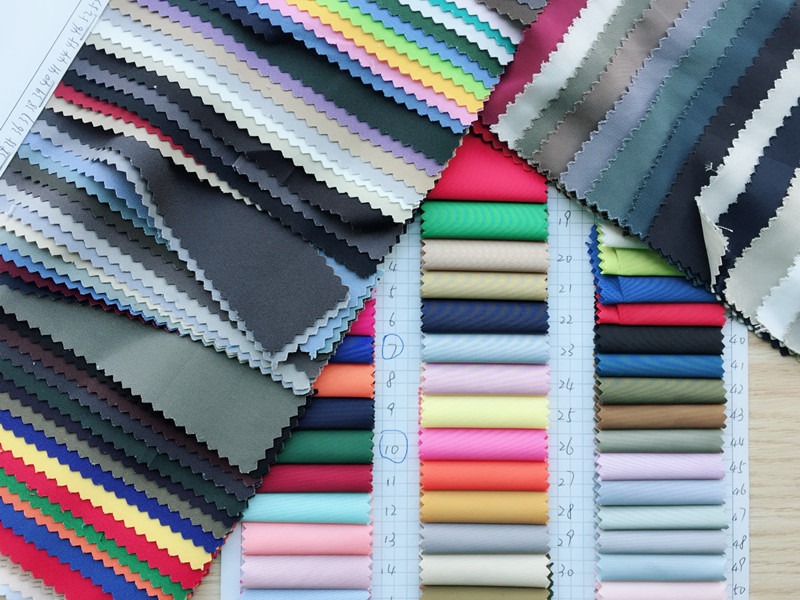
Materials decide how caps feel and perform in real use. Baseball and tennis caps use different fabrics because the sports demand different performance levels.
Baseball caps are usually made from cotton twill or polyester blends for durability and structure. Tennis caps often use lightweight polyester mesh, nylon, or moisture-wicking fabrics to keep the head cool and dry during intense matches.
Baseball players spend hours outdoors, but not all movements are fast, so heavier cotton or structured polyester works well. Tennis players need breathable, quick-drying materials to handle constant sweat and sunlight.
| Material Type | Baseball Cap | Tennis Cap |
|---|---|---|
| Cotton Twill | Durable, holds embroidery well | Rare, too heavy for fast play |
| Polyester | Structured, strong, easy to print | Lightweight blends, sweat-resistant |
| Nylon/Mesh | Used in trucker baseball caps | Common for ventilation and airflow |
| Moisture-Wicking | Less common, only in sports editions | Core material to manage heat and sweat |
Choosing the right fabric is key: baseball caps emphasize branding and team image, tennis caps prioritize player performance and comfort.
3. Which Cap Style Provides Better Sun Protection and Ventilation?

Sun protection is essential in both baseball and tennis. But ventilation and cooling are even more critical in tennis.
Baseball caps provide stronger sun protection with their structured brim and thicker fabrics. Tennis caps offer better ventilation through mesh panels, lighter fabrics, and sweatbands, making them more suitable for hot, high-intensity matches.
Baseball caps cover the forehead and eyes well, making them ideal for long outdoor games. Tennis caps balance sun protection with airflow, using lighter bills and open mesh sides so players do not overheat.
| Factor | Baseball Cap | Tennis Cap |
|---|---|---|
| Sun Protection | Stronger brim coverage | Adequate, but lighter visor |
| Ventilation | Moderate, often closed panels | High, often mesh or perforated |
| Sweat Control | Basic sweatband | Advanced moisture-wicking sweatbands |
| Heat Management | Warmer due to thicker fabrics | Cooler due to breathable construction |
In hot climates, tennis caps perform better for comfort. For branding and strong protection, baseball caps have the advantage.
4. How Do Baseball Caps and Tennis Caps Align with Fashion vs. Functional Use?

Caps are not only for players; they are also lifestyle accessories. Baseball and tennis caps differ in how they transition from sports into fashion.
Baseball caps are iconic in fashion, worn with casual wear, streetwear, and even luxury outfits. Tennis caps are mainly functional, less common in everyday fashion, but linked to sporty elegance and minimalist style.
Baseball caps have become cultural items, representing teams, brands, and personal identity. Tennis caps stay closer to functional sportswear, but luxury brands sometimes adapt their sleek look for lifestyle collections.
| Use Case | Baseball Cap | Tennis Cap |
|---|---|---|
| Streetwear | Strong presence in global markets | Rare, except luxury sports brands |
| Team Merchandise | Central product for fans | Limited, mostly for performance players |
| Lifestyle Fashion | Casual, trendy, cross-gender appeal | Sporty chic, niche appeal |
| Function | Style + protection | Performance-first |
If the goal is lifestyle branding, baseball caps dominate. If the goal is high-performance wear, tennis caps remain specialized.
5. What Role Do Sports Regulations and Player Preferences Play in Cap Design?

Sports governing bodies and player comfort influence how caps are designed and produced.
Baseball leagues allow team-specific structured caps with embroidered logos. Tennis tournaments permit only lightweight, non-distracting caps, often with restrictions on logos and colors depending on brand sponsorships. Player preference also shapes design, from brim length to fabric choice.
Baseball teams standardize cap design for identity and brand recognition. Tennis players choose caps individually, prioritizing comfort and performance. Sponsorship deals further influence which designs reach markets.
| Factor | Baseball Cap | Tennis Cap |
|---|---|---|
| League Rules | Standardized design for teams | Flexible, but often sponsor-regulated |
| Player Preference | Less flexibility, team dictates | High flexibility, players choose fit |
| Branding | Central element of team merchandise | Secondary to performance and comfort |
| Market Impact | High resale in fan merchandise | Limited resale, performance-driven |
These differences explain why baseball caps dominate fan merchandise, while tennis caps stay performance-oriented.
6. Which Cap Type Is More Versatile for Everyday Wear and Branding?
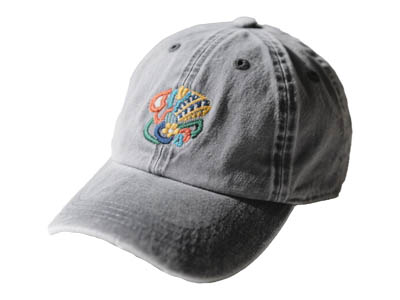
For wholesalers and brands, versatility is a key factor in deciding which cap to promote.
Baseball caps are more versatile than tennis caps because they work in both fashion and sports. They are highly customizable, accepted in streetwear, promotions, and corporate branding. Tennis caps are limited mainly to sports use and niche athletic markets.
Baseball caps are universal: fashion brands, promotional companies, and retailers all use them. Tennis caps remain specialized, appealing to athletes and sportswear buyers but less to casual consumers.
| Versatility Factor | Baseball Cap | Tennis Cap |
|---|---|---|
| Branding Surface | Large, structured panels | Smaller, less structured |
| Everyday Wear | Strong presence in daily fashion | Limited to sporty styles |
| Corporate Use | Widely used in promotional marketing | Rare, less effective |
| Wholesale Demand | High, across multiple industries | Low to medium, mainly sports retail |
For most buyers, baseball caps are the safer and more profitable wholesale choice.
Baseball caps and tennis caps may seem similar, but they serve very different purposes. Baseball caps stand out in fashion, branding, and versatility, while tennis caps focus on lightweight performance and comfort. For buyers, understanding these differences ensures smarter sourcing and better product choices.
👉 At Kinwin, we specialize in helping global buyers design and customize the right caps for their markets. If you are looking to source baseball caps or tennis caps in bulk, contact us today at [email protected] or visit **https://hatfactorychina.com/** to start your custom project.


